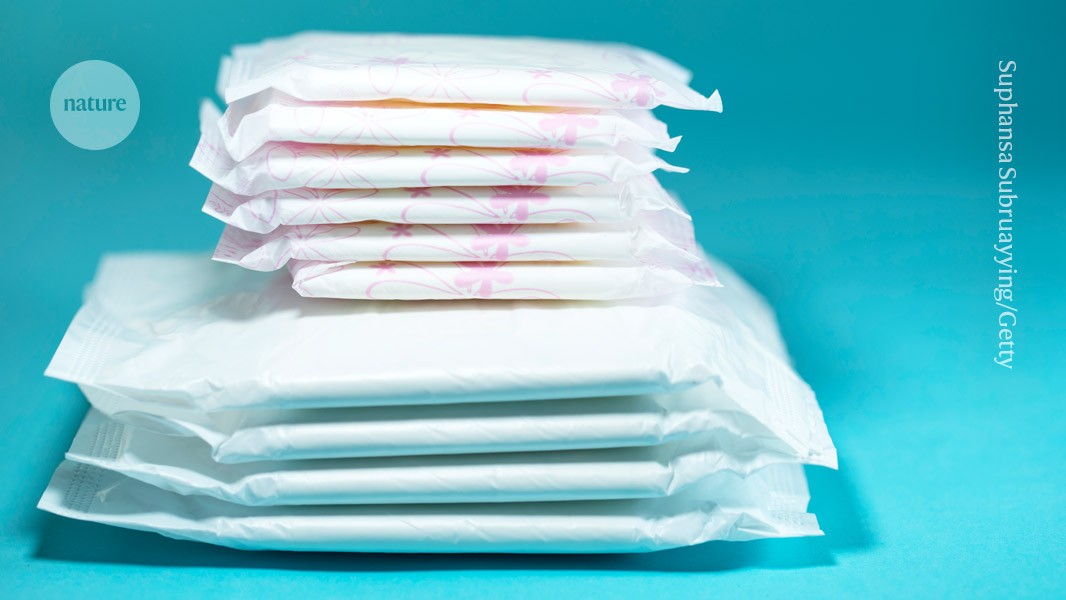These period pads solidify blood to prevent leaks

They’re filled with a seaweed-derived product that forms a gel and is biodegradable

Commonly-used menstrual pads, which can leak when saturated, have not changed much over time.Credit: Suphansa Subruayying/Getty
A biodegradable molecule derived from seaweed that forms a gel when it comes into contact with blood could address leakage of menstrual products, according to a study1 published today.
The alginate product was significantly better at retaining blood in a menstrual pad than commonly used fillers, which absorb blood but can leak when saturated. The gel also eliminated spillage from menstrual cups.
Modern menstrual products — pads, tampons and cups — have changed little over time, says study co-author Bryan Hsu, a biomedical scientist at Virginia Polytechnic Institute and State University in Blacksburg. Hsu’s team wanted to find a different way to deal with menstrual blood. “We want to gel it, so that it can be managed better.”
The study came about because of Hsu’s PhD research, which looked at self-assembling hydrogels that were highly effective at clotting blood2. “I started thinking,” says Hsu, “what can I do with that?”
Leak-proof pads
Menstrual blood can present a unique challenge, because it contains enzymes that prevent clotting. Hsu and his colleagues tested a range of polysaccharides — long-chain carbohydrate molecules — and found that a high-molecular-weight alginate, combined with glycerol, was best at forming a long-lasting gel with pig blood, which had been treated to reduce clotting.
The researchers tested a powdered formulation both as a filler in a menstrual pad and in a short length of fabric coiled inside a menstrual cup, using an artificial vagina. They also added an antimicrobial molecule, trimethyl chitosan, to inhibit the growth of Staphylococcus aureus bacteria, which can cause a rare but potentially fatal toxic shock syndrome associated with tampon or menstrual-cup use. The team is now developing the pad and menstrual cup containing the molecule further and researching how it might be used in a tampon.
Sharra Vostral, a historian focused on science, technology and gender studies at Purdue University in West Lafayette, Indiana, says the development represents an interesting iteration in menstrual technology, the aim of which is to conceal that a person is menstruating. For people in “all those places where it’s unacceptable to have a period or it’s unacceptable to even act like there’s blood, the pads and the tampons and now cups are really important,” says Vostral, who has written on the history of menstrual products.
But she said caution is needed when using antimicrobial products in the vagina, because there are “a lot of friendly bacteria you need in there to just have a healthy vaginal microbiome”.
doi: https://doi.org/10.1038/d41586-024-02236-5
This story originally appeared on: Nature - Author:Bianca Nogrady


















